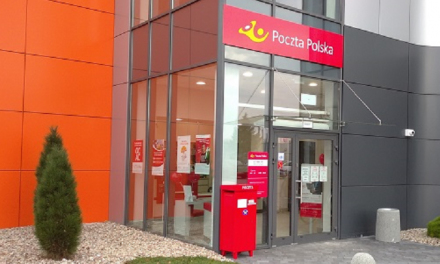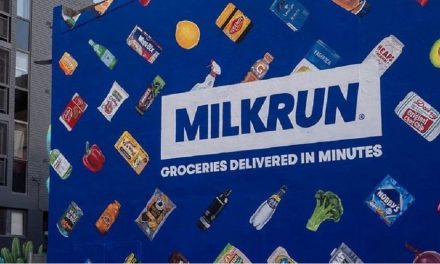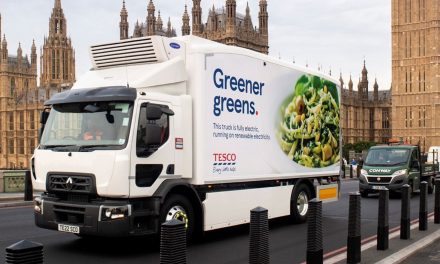
Comeback for catalogues?
Far from being dethroned by the internet, the big book has thrived on the back of an online presence and given UK printers a major boost. Helen Morris reports.
Whoever said that the internet would signal the death of print must be eating their words. Only last month, the Financial Times ran an article about the big book being back with a vengeance as retailers are returning to a traditional way of selling – via catalogue. And this time round, not only are many retail firms adding catalogues as a fundamental part of their strategies, but the catalogue is also serving to complement online sales. Even websites such as Ebay have produced print editions.
Good news for catalogue printers is that while those that historically have relied on the medium to get their message across continue to do so – such as mail order companies like Avon, Empire, and Grattons – there is a growing band of retailers willing to embrace the power of the printed page and move from a store- or internet-only presence to a bulging product catalogue. Tesco, Woolworths and John Lewis, among many others, have all gone down this route. But what is driving this growth and what do the nation's catalogue printers make of it?
Despite initial fears, the popularity of print has not been massively affected by the growing influence of the internet in the modern business world. No more is this the case than with catalogues where the internet and print increasingly go hand in hand. The two mediums have learned to work off each other, which importantly means that print has thrived.
Smarter designs
Online sales are flourishing, and that's down to the traditional, bulky catalogue being replaced by clever, creative marketing: catalogues are now smaller, smarter, and bursting with fresh products. Print runs are commonly in the high hundred thousands, and these catalogues are providing a fillip for UK printers. When the renewal contracts come up for grabs, they're hotly contested, as they can make or break a firm.
With Christmas fast approaching, the major high-street retailers have significantly increased the number of big books available. But the story is not that simple – they acknowledge that catalogues have had to become more imaginative in a crowded marketplace. Simon Rigg, commercial sales director at Benhamgoodheadprint (BGP) says: "It is a very buoyant market at the moment, with good levels of activity and there has definitely been a development in the sophistication of marketing."
The new big books from retailers such as Tesco and Woolworths are having a knock-on effect for the printing industry, believes Vic Rollinson, director at Graphoprint, winner of the Catalogue Printer of the Year category at last week's PrintWeek Awards. "Hopefully the big catalogues from Tesco and so on will create more interest and therefore more print," he says. "Things have certainly got busier for the later half of this year for web offset printers, many of whom will be working to full capacity right into December."
BGP received a commendation for Catalogue Printer of the Year at the same awards after producing a series of jobs with high production values. OnLine Poker, for example, was printed on a 16pp Komori press with the double gatefold cover produced on a 10-colour Heidelberg Speedmaster. Rigg explains: "We have a massive binding capacity for longer pagination catalogues. However, printers now are considering shorter runs, which is lower than you would traditionally associate with web offset."
Yet it's not all smooth running. Nick Horsfield, print manager at Mamas & Papas in Huddersfield says that attitudes on the catalogue printing industry vary greatly from printer to printer. He says: "The market is pretty flat at the moment. The sheetfed sector consists of a mixture of printers who are doing very well and those who have little or no work going on." More optimistically, however, Horsfield adds: "Despite the rush of people going onto the internet, printers are still dealing with the same volumes of five years ago. Consumers still want to buy off the page, from a hard copy."
Rigg says that there are still pressures facing printers, in particular, ever-reducing lead times. He suggests that the recently enforced Pricing-in-Proportion (PiP) scheme has had an impact as well. "More people are definitely looking at mailing costs and sizes, and being generally more creative with design."
In a similar vein, Graphoprint's Rollinson admits that the industry has had to change strategy after the changes announced by the Royal Mail. "Some customers are re-thinking what they are doing. The new pricing system should lead to more A5 work for mailing." He adds that it has been a rollercoaster for catalogue printers over the past five years. "There have been a number of well-known web offset casualties, such as Cradley Print, New Jarrold Printing, TPL and WE Berry. There have also been changes in the retail and mail order sectors with a lot of consolidation. Hopefully we are entering a period of stability and growth."
Overseas competition
However, that stability and growth may be compromised by the increasing trend of production going overseas. Big retailers such as Tesco and Woolworths have already placed major slices of their catalogue work abroad, and the question arises as to whether production is increasingly likely to go there in the future. In places like China, print remains cheaper and the logistics of getting it from "A to B" are becoming less of an issue than it used to be due to improving transport links – and for those publications that are not time-sensitive, it can make perfect sense.
Horsfield says: "We print our main catalogue in Poland, which is of excellent quality and a great price. With the EU now having more members, more print will be placed in central Europe and the wise UK printer will look to build or purchase a plant in this region."
With the big names of UK retail unveiling major catalogue print runs for Christmas, the big book boom looks here to stay, and may very well create more interest and, in turn, much more print. The pressures are being met by printers that are taking up the challenge and adapting ideas.
The dominant influence of the internet is boosting the popularity of the catalogue and many retailers are finding increasing value in it as a sales outlet. Consumers are not satisfied with one means of shopping, and the demand for an online outlet, high-street shops, and a catalogue, are all required. RETAILERS – MARKET MOVES
– Tesco and Woolworths have recently been in the news with the launch of major-run catalogues. The 2m-run Tesco Direct catalogue that launched in September was previously printed by Italian printer Eurogravure, and included details of 2,000 of Tesco's 8,000 non-food items. It was announced that part of the retailer's catalogue was to move back to the UK, to be printed off KBA presses at Prinovis' new £115m Liverpool site. Also being printed at the superplant is a 96pp section of Argos' Spring/Summer 2007 catalogue.
– Tesco hired catalogue print expert Steve Haithwaite to spearhead the Tesco Direct launch. Initially, IT glitches delayed the launch of Tesco Direct internet and catalogue service (PrintWeek, 8 August 2006). There was also speculation over the print run of the magazine, after reports that it ranged from 2m to a print run of up to 20m (the latter figure being closer to the former). The supermarket giant says that its move into catalogue shopping has been prompted by a growth in single households, an ageing population and a rise in the proportion of urban dwellers.
– In September, Woolworths revealed details of a major catalogue launch that was printed by French firm Lenglet Imprimeurs, which opened a 50,000m2 gravure superplant last year. The 528pp Big Red Book, with a massive 6m print run, carries information on more than 6,000 products in Woolworth's 821 UK stores. It is the most ambitious marketing project ever undertaken by Woolworths. Stephen Robertson, marketing director at the retailer says: "Catalogues are more popular now than ever before, even with the rise of internet shopping. The Big Red Book is the latest step in our multi-channel retail drive. It is over five times bigger than last year's Christmas catalogue and a strong competitor to Argos and Tesco Direct."
– The Ikea 2006/07 catalogue was launched on 27 August and has a worldwide print run of 175m copies. It was distributed in 35 countries, in 27 languages, and it is thought to have the highest circulation of any publication worldwide – even surpassing, Ikea claims, the Bible.













